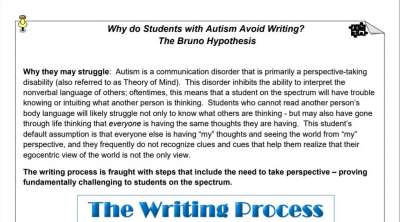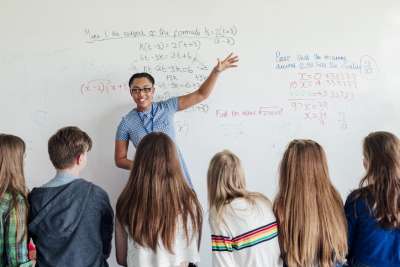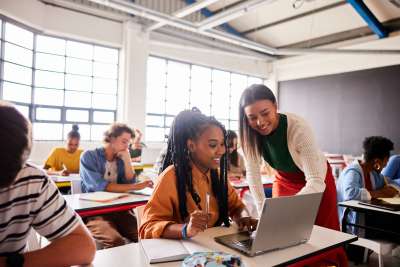Dr. Karla Bester is an experienced educator with over 20 years of experience in the classroom who currently works as a Director of Programs for an education company.
Meet your students where they are and celebrate each child's unique gifts and needs with these differentiated instruction concepts.
Differentiated Instruction: One Approach to Help Students
Before the pandemic, the need for differentiated instruction in the learning environment was understood by teachers. But the shift from in-person to online learning impacted instructional strategies, affecting students, teachers, parents, and more. This tremendous change in education exposed and exacerbated existing inequalities in the education system.
To help transform the education system, educators must find ways to meet the wide range of academic needs in their current classrooms. Differentiating instructions and lessons can help to meet the learning needs of each student. This teaching strategy recognizes that students have different learning styles and abilities, and therefore require different approaches to learning.
Here are a few questions and tips that will help educators prepare for differentiated instruction in a mixed-ability classroom.
What is Differentiated Instruction?
Differentiated instruction is the means of presenting the same learning materials in various ways, allowing students to access the information in a way that is optimal for their learning. It is not remediation. Different types of differentiated instruction strategies can help the individual needs of learners. These include content differentiation, process differentiation, and product differentiation.
Content differentiation
Content differentiation involves presenting the same material in different ways that suit the individual student’s learning preferences. For example, a history lesson plan made with content differentiation may involve the use of documentaries, articles, videos, textbooks, and other books to present the material. This way, students with visual, auditory, or kinesthetic learning profiles are catered to.
Process differentiation
In process differentiation, a teacher considers the needs of all learners and adapts their teaching approach. For instance, when the whole class takes a test, not everyone has the same level of understanding. Teachers who practice process differentiation assign different activities to different students based on their ability levels. These assessments provide students with a variety of ways to demonstrate their understanding.
Product differentiation
Product differentiation is used to evaluate student progress and performance. Rather than having all students perform the same task at the end of a unit, teachers give their class a choice of assignments that can be tailored to students’ strengths and interests.
Questions Educators should consider when planning for Differentiation:
As a teacher, planning for a differentiated classroom can be a daunting task. However, differentiated instruction is crucial for the success of a mixed-ability classroom. The following questions can help you effectively plan for differentiated instruction in the classroom and meet the learning needs of your students:
1. What are the learning goals for the lesson/unit?
Establishing what students should know or understand after completing the lesson is essential. This enables you to create learning goals that are manageable yet challenging for all learners, regardless of their ability levels.
2. What prior knowledge do my students have?
It is crucial to understand the background and knowledge level of your students, as it will impact how you deliver your lesson plan. By acknowledging your students' prior knowledge, you can modify content, process, and product to challenge all learners while ensuring they understand the required concepts.
3. What are the preferred learning styles of my students?
Each student learns differently; therefore, you should consider how to present information and learning activities to cater to multiple learning styles. This means using visual aids like diagrams, videos, and interactive activities, among others, to supplement lectures or reading. By targeting different learning profiles, you will help the whole class to understand the material.
4. What gaps in knowledge or ability levels do students have?
In a diverse classroom, students may have different levels of understanding essential concepts and skills. Therefore, during preparation, it's essential to identify these areas of weakness and plan instruction that will fill these gaps appropriately.
5. How will I group the class to aid student needs?
Differentiation requires grouping students effectively. Therefore, it's essential to determine how best to group your students to meet their learning needs. Some teachers divide learners into collaborative pairs or small groups, while others opt for more individualized approaches. Perhaps you can group students with similar learning styles, thinking skills, or interests. Make these flexible groupings that can change throughout the school year with student progress and learning experiences.
6. What tools and resources do I need to support the needs of all learners?
The incorporation of technology into learning has revolutionized how teachers prepare for instruction. Teachers may choose to use tools like online resources, teaching applications, digital tools, and hardware such as tablets and laptops to provide differentiated instruction.
7. What assessments align with the lesson plan?
Assessment is critical to measure classroom objectives and student learning. When planning for differentiated instruction in a diverse classroom, consider how you will assess your learners while maintaining consistency in grading.
8. How will I communicate with students regarding their learning needs?
Collaboration is essential when it comes to differentiated instruction. Communicating with students and their parents about learning needs and learning processes is crucial so that everyone is on the same page regarding what works for individual students.
9. How will I motivate and engage learners in the classroom?
Differentiation requires planning for activities and lessons that are engaging for all learners. Besides incorporating students’ interests, teachers should use differentiated learning activities that challenge students while providing opportunities for collaboration and problem-solving.
Final thoughts on differentiated instruction
Don’t let this approach to teaching intimidate you. Differentiated instruction is a complex but effective approach to meet the varied needs of students in diverse classrooms. By considering the above questions, teachers can learn how to differentiate instruction and deliver lesson plans catering to a range of student abilities, interests, and learning styles. Differentiated instruction makes learning more engaging and enriching for all learners, and the whole class is given equal opportunities to excel. Make sure to save your ideas and activities, so that you can modify and apply them to your class year after year.















